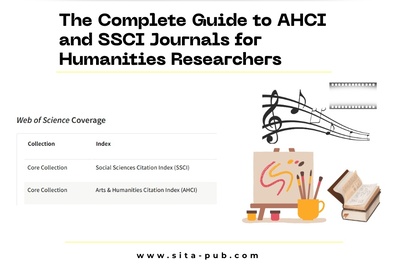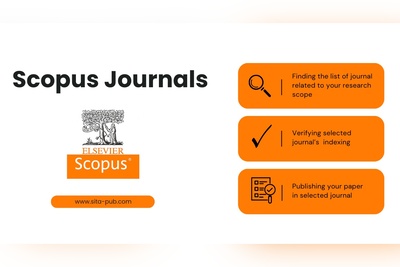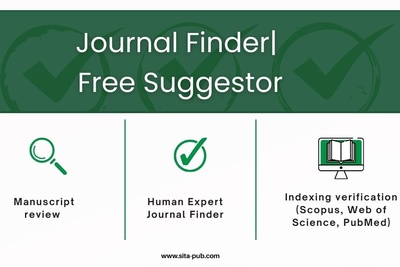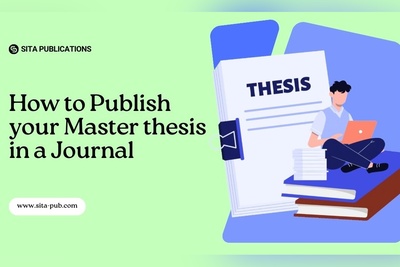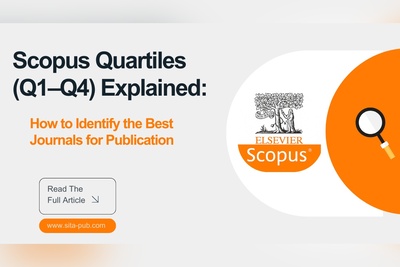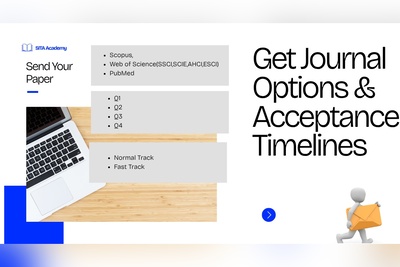Is a Q1 Journal Always Better? Here’s What You Should Know
Is a Q1 journal always the best choice? Learn the real differences between Q1–Q4 journals, the factors that matter more than quartile, and whether Q3 and Q4 journals are still worth publishing in. Includes expert insights and Q1–Q4 publication support from SITA Academy.
- Q1 Journals vs. Q2, Q3, and Q4: What Do Quartiles Actually Mean?
- Is Quartile Really the Only Thing That Matters?
- Are Q3 and Q4 Journals Worth Publishing In?
- When Should You Aim for Q1?
- When Q1 Is NOT the Best Choice (But Most Researchers Don’t Know This)
- How to Choose the Right Quartile for Your Paper
- Research Paper Publication Services in Q1–Q4 Journals at SITA Academy
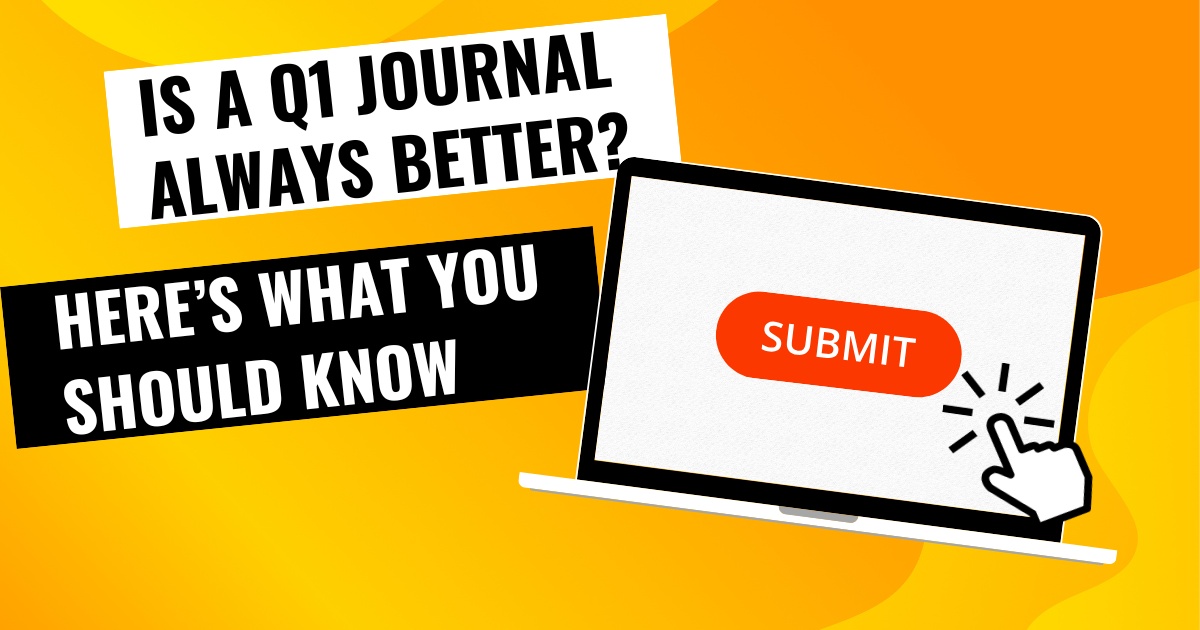
For many researchers—especially those preparing for academic promotion, seeking international recognition, or building a stronger research portfolio—Q1 journals are often seen as the ultimate goal. Universities highlight them. Funding agencies value them. Promotion committees reward them. As a result, many scholars assume that Q1 journals are automatically the best choice for every manuscript.
But is this really true?
The answer is more nuanced than most people think.
While Q1 journals play a crucial role in shaping academic visibility and reputation, they are not always the most suitable—or even the most strategic—option for every researcher or every paper. In some cases, aiming for Q1 may increase delays, reduce the likelihood of acceptance, or push authors toward journals that are misaligned with their field.
This article explains the real differences between Q1–Q4 journals, breaks common misconceptions, and helps you understand how to choose the right journal based on your research goals—not just the quartile number.
Q1 Journals vs. Q2, Q3, and Q4: What Do Quartiles Actually Mean?
Quartiles (Q1–Q4) categorize journals based on their citation performance within their subject category. The ranking is based on either:
SJR (Scimago Journal Rank) → for Scopus
JCR (Journal Citation Reports) → for Web of Science
Here’s what the quartiles represent:
Q1 (Top 25%) – The Elite Group
Highest impact and visibility
Highly selective
Often require strong methodology and significant contribution
Longer review times
High rejection rates
Q2 (25–50%) – Strong, Reputable Journals
Competitive but more accessible
Good visibility
Often have faster review cycles
Ideal for solid research with clear contribution
Q3 (50–75%) – Moderate Tier, Good Fit for Many Fields
More inclusive and practical
Often used by early-career researchers
Suitable for niche or emerging fields
Practical results and applied studies often get accepted
Q4 (75–100%) – Acceptable but Lower Impact
Still indexed (Scopus or WoS), which many universities accept
Best for practice-based, localized, or small-sample studies
Fast review times
Often serve as training ground for new researchers
Important:
A journal being Q1 or Q4 does not determine the quality of your research. Quartiles measure the journal’s citation behavior—not the value of your study.
Is Quartile Really the Only Thing That Matters?
Absolutely not.
In fact, focusing only on quartile is one of the most common mistakes researchers make.
Promotion committees evaluate multiple factors besides quartile, including:
1. Journal Scope and Field Relevance
A perfectly written paper may be rejected immediately if it doesn’t match the journal’s aims and scope—even in Q4.
A well-matched Q2 is often better than a mismatched Q1.
2. Acceptance Rate
A Q1 journal may have:
Acceptance rate < 10%
Review cycle = 6–12 months
While a Q2/Q3 journal may have:
Acceptance rate = 20–40%
Review cycle = 1–3 months
If you are preparing for promotion, timeline matters just as much as quartile.
3. Publication Speed
Some fields—medicine, engineering, computer science—move fast.
A 12-month delay can make a study outdated.
4. Journal Indexing Stability
Key question:
Will this journal remain indexed next year?
Some lower-quartile journals get discontinued because of:
Poor editorial practices
Citation manipulation
Ethical concerns
A safe Q2 is better than a risky Q1.
5. Article Type
Review articles and experimental studies often fit in Q1 journals.
Case studies, surveys, and applied work often belong in Q2–Q3 journals.
6. Institutional Requirements
Every university has its own rules:
Some require any Scopus/WoS indexing.
Some require at least Q3 and above.
Some demand Q1/Q2 only in some fields.
7. Language Quality and Formatting
Even high-quality research gets rejected from Q1–Q2 journals due to:
Weak English
Poor formatting
Incorrect references
Missing ethical statements
Quartile is not a shortcut to publication success.
Are Q3 and Q4 Journals Worth Publishing In?
Yes—absolutely.
And here’s why.
1. They Are Still Indexed
A Q3/Q4 journal is still:
Scopus indexed, or
Web of Science indexed
This alone meets the requirements of many universities.
2. They Accept Valuable Specialized Research
Not all impactful research is highly cited. Some studies serve:
Local populations
Specific industries
Applied solutions
Narrow scientific communities
Such work fits perfectly in Q3/Q4 journals.
3. Faster Publication
For researchers:
Applying for promotion
Completing a thesis
Needing publications for graduation
Facing deadlines
Q3/Q4 journals provide a realistic and strategic route.
4. Opportunity to Build a Publication Record
Researchers early in their careers often use Q3–Q4 journals to:
Gain experience
Build confidence
Learn the publication process
Prepare stronger papers for Q1–Q2 later
5. Not All Q3/Q4 Journals Are Low Quality
Many Q3 journals are:
Reputable
Stable
Well-cited
Published by major publishers (Elsevier, Springer, Wiley)
Don't underestimate Q3/Q4—they may be the perfect fit for your topic.
When Should You Aim for Q1?
Q1 is an excellent choice when:
Your study offers a significant novel contribution
You have strong methodology and data
You are not under time pressure
You need highly visible publications
Your institution requires Q1/Q2 for promotion
But if:
Your study is applied rather than theoretical
Your English writing needs improvement
Your data is limited
You need fast publication
Then Q2–Q3 may be a better strategic choice.

When Q1 Is NOT the Best Choice (But Most Researchers Don’t Know This)
Here are common scenarios where Q1 is not ideal:
1. When Your Paper Is Not Novel
Q1 journals prioritize novelty above all else.
2. When You Need Publication in 2–3 Months
Q1 timelines are usually:
Slow initial screening
Multiple revision rounds
More demanding reviewer comments
3. When the Journal Scope Only Partially Fits
Even a top-quality study may be rejected for scope mismatch.
4. When You’re Still a Beginner
Q1 journals expect:
Perfect formatting
Strong academic writing
Professional figures
Rigorous methodology
Beginners often face rejection without clear reasons.
How to Choose the Right Quartile for Your Paper
Here’s a practical approach:
Step 1: Evaluate Your Paper Objectively
Ask:
Is this study novel?
Does it have strong methodology?
Is the English writing strong enough?
Step 2: Match the Journal Scope
A perfect fit with scope beats quartile.
Step 3: Consider Your Timeline
If you need publication within 2–3 months:
→ Q2 or Q3 is ideal.
If time is not an issue and the study is strong:
→ Try Q1.
Step 4: Look at Acceptance Rates
High quartile ≠ high acceptance.
Step 5: Verify Indexing Stability
Never publish in a journal that may be discontinued soon.

Research Paper Publication Services in Q1–Q4 Journals at SITA Academy
At SITA Academy, we help researchers publish in reputable Scopus and Web of Science journals across all quartiles (Q1–Q4).
Our process is designed to maximize acceptance and choose the right journal for your paper—not just the highest quartile.

Paper Review & Journal Matching
We evaluate your manuscript academically and match it with:
A suitable journal
In the right quartile (Q1–Q4)
With the highest acceptance probability
Formatting & Author Guidelines Compliance
We format your paper according to the journal’s exact requirements:
Tables
Figures
References
Margins
Subheadings
Ethical statements
Transparent Journal Options
We provide journals with:
Accurate quartile (SJR or JCR)
Publication fees
Expected acceptance time
Expected publication time
Submission Support
We assist with:
Journal submission
Cover letter
Response to reviewers
Communication with editorial team
English Editing and Technical Improvements
We enhance clarity, grammar, and academic tone to meet international standards.
You choose—we handle the rest.
Final Thoughts
A Q1 journal is excellent—but it is not the only path to a successful publication or career advancement.
What matters most is the strategic alignment between your paper, your goals, and the journal’s characteristics.
A strong, well-written, well-matched paper in a Q2 or Q3 journal can be more impactful than a rejected submission in Q1.
The smartest researchers are not those who chase quartiles—they are those who publish strategically.
Verified Contact Channels
If you have any questions, inquiries, or would like to learn more about our services, please don't hesitate to reach out to us. Our dedicated team is ready to assist you.





